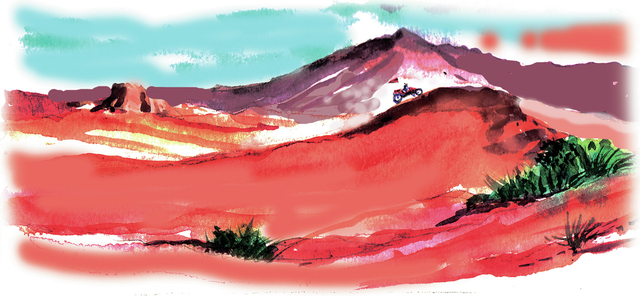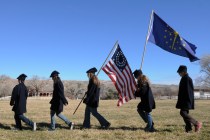Utah’s Coral Pink Dunes offer sandy playground
Orange-red sand dunes accented by tall ponderosa pines, pinyons and junipers create a striking and unusual landscape in Southern Utah’s Coral Pink Sand Dunes State Park.
Located at 6,000 feet elevation, this distinctive area near Zion National Park offers a sandy playground for ATV riders, as well as areas for nonmotorized activities. Visitors enjoy picnicking, camping, hiking, horseback trail riding, wildlife watching, photography and stargazing.
This beautiful park lies southeast of Zion a few miles off U.S. Highway 89. It can be reached either through Zion or across the Arizona Strip from Hurricane, Utah, to Kanab. Using either route, head north from Las Vegas on Interstate 15 into Utah through St. George. A few miles north of St. George, exit I-15 onto state Route 9.
If you continue on Route 9 beyond Hurricane through Zion, you will have to pay the park entrance fee. Those in RVs or towing a trailer must also pay an escort fee to travel through the Mount Carmel Tunnels on the road through the park to U.S. 89 at Mount Carmel Junction. The 8-mile main access road to Coral Pink Sand Dunes is three miles south of the junction.
Many visitors avoid paying the national park fees by turning onto Highway 89 in Hurricane, which becomes Route 389 at the Arizona border. Turn north at Fredonia to reach Kanab and the junction with U.S. 89. Head north from Kanab to reach either of two roads accessing the park from U.S. 89.
Coral Pink Sand Dunes preserves more than 3,700 acres for recreation, including 2,000 acres of high dunes and sand hills. It is the only dune field on the Colorado Plateau and the second highest such area on the continent. This geological area is created by a notch between the two mountains that funnels windborne grains of sand into the area. The gorgeous sand is several hundred feet deep and still growing and moving. Colored by iron oxide, the sand grains erode from the vivid Navajo sandstone found throughout Utah’s color country.
Established in 1963 as a state park, Coral Pink Sand Dunes attracts visitors year-round. When winter brings enough snow, visitors enjoy tubing or tobogganing down snow-covered sandy slopes as well as snowmobiling on trails and roads. Popular with off-highway riders, this park fills up fast on weekends and holidays in all seasons.
Near the main park entrance, a tree-shaded picnic area and a boardwalk trail over the sand invite exploration. Closed to off-road use, this is part of the park set aside for nonmotorized uses, such as hiking and playing in the sand. Children enjoy digging in these red sands using buckets and plastic shovels. Some of the acres where motorized vehicles are prohibited also protect the endangered Coral Pink tiger beetle, a subspecies found only in these sands.
Utah charges an $8 day-use fee to enter the park. Many visitors come just for the day, but others opt to stay overnight or longer in the park’s campground, which includes 22 tent and RV sites without hookups. The park offers heated restrooms with showers, a welcome amenity for visitors after a day in the dunes. Fees are $20 per night.
Visitors arriving midweek in spring, fall and winter are likely to find several available campsites, but those arriving on weekends and holidays, especially in summer, should plan ahead and make reservations. You can reserve sites online any time or by calling 800-322-3770 from 8 a.m. to 5 p.m. Mountain time on weekdays.
Be sure to stop at the park’s visitor center and small gift shop for information on hikes and programs, such as the frequent star parties. Because Coral Pink Sand Dunes State Park is far beyond the reach of city lights, night skies there are astounding, especially for urban visitors unaccustomed to such starry night skies. Call the park for more information at 435-648-2800.
Margo Bartlett Pesek’s column appears on Sundays.






















